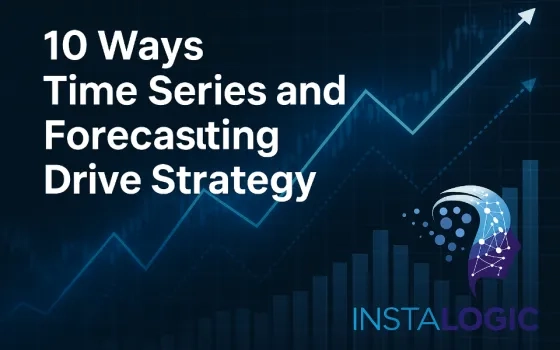73% of companies with above-average Customer Experience (CX) perform better financially than their competitors. Hence, it’s probably safe to assume that Customer Experience is a key differentiator that changes the game of customer satisfaction and improves loyalty.
Customer Experience (CX) refers to the perception or opinion perceived by customers based on the interactions with the company. Based on this experience, your customer builds trust for your brand or business. Throughout their journey, there are various touchpoints where customers’ experience could be delightful or could be unpleasant. Hence, gauging customer experience is crucial for your business.
Why Customer Experience is Important?
Customer Experience comprises two crucial elements, first is the quality of products or services you sell and the other is the customer support services. If you make yourself ace in providing both the thing impeccably to your customers, they’ll not only admire your business but also develop trust and loyalty towards your brand.
There are other business benefits associated with measuring customer experience.
- Helps in ensuring business opportunities – According to a survey conducted by Econsultancy, various digital marketing companies have identified CX as a lucrative opportunity for 2019. Since 2015, after content marketing, CX is an area that is the single most exciting opportunity for business.
- Helps in increasing sales – Customer Experience is correlated with your business growth and revenue. A good customer experience ensures better sales for your business. Walker claimed that “by the end of 2020*, Price and product will be overtaken by customer experience as the key brand differentiator.” This means that if customers have a good customer experience they will not switch to another brand and are also willing to pay more for the products and services. This will automatically boost the sales of your business.
- Helps in reducing costs & boosting profit – A 5% rise in customer retention rate increases by 25% to 95% profits. If you can retain your lost customers then this will help you to augment your profit rate drastically. Now the question is how you retain your customers? Conducting a Customer Experience Survey can help you to track your customers’ reactions through feedback. If your customers are not happy with your products or services then you can follow up with them. This helps you to improve their experience and convenience them to stay in your business.
- Helps in reducing churn rate – If your customers are experiencing bad and not satisfied with your products or services, they will simply churn out of your business. Your churned customers will not stop here only, they will spread bad word of mouth for your brand and defame you in the market. But if you can convince your unhappy customers with an improved level of CX, then they will be ready to do business with you. 93% of customers were more likely to be repeat customers at companies with excellent customer service.
There are different ways to measure the customer experience, but the most used method is the Customer Experience Metric.
Customer Experience Metrics
Customer Experience Metrics are KPIs that businesses use to gauge customer loyalty and satisfaction. CX comprises a series of experiences like overall experience, long-term relationship, quick transaction-based experiences, so Customer Experience Metrics gives you the platform where you can evaluate your customers’ perceptions based on interactions, events, and transactions. Broadly 3 major Customer Experience Metrics are available in the market:
- Net Promoter Score (NPS)
- Customer Satisfaction Score (CSAT)
- Customer Effort Score (CES)
1. Net Promoter Score (NPS)
If you are looking to do a loyalty check on your customers regarding your brand, then NPS is a good-to-go indicator. It establishes the correlation between customer satisfaction and loyalty. It means that, if your customers are fully satisfied and happy with your business or brand, they will become loyal to your brand. Like in the case of the iPhone. iPhone users are happy and satisfied with the brand, so they are ready to pay even high for it. Also, they openly recommend the iPhone to other consumers.
This Recommendation is the biggest game-changer in the NPS. That’s what NPS does. It gauges customer loyalty based on recommendations. Here customers are provided with the NPS Survey in which businesses ask “How likely would you be to recommend our [PRODUCT/SERVICE/BUSINESS/BRAND] to a friend?” Customers can rate their likelihood on a scale of 0-10.
The scale range 0-6 denotes that your customers are unhappy and would not like to recommend your business and spread negative word of mouth for your business. They are known as Detractors. The customers who scored you 7-8, it means they are Passives, they are neutral, neither harsh nor gentle. And last is 9-10, these score givers are Promoters. They are happy and satisfied customers who advocate your brand.
You can calculate the Net Promoter Score using the simple NPS Formula
Net Promoter Score (NPS) = % Promoters – % Detractors
NPS Software enables you to track real-time instant customer experience at various customer touchpoints like post-transaction, interaction, events. For example, after checkout from an online store or website, you can share a post-sale NPS transactional survey with your customers.
2. Customer Satisfaction Score (CSAT)
As the name suggests, the Customer Satisfaction Score metric measures the level of satisfaction your customers are getting out of your products, services, or brand. Why measure Customer Satisfaction? Because customer satisfaction is considered to be a cornerstone to building better customer experiences. CSAT is best to use as a transactional metric that immediately captures customer satisfaction data after a specific interaction. The CSAT Survey is great for:
- Evaluating customer satisfaction with product updates
- Gauging Customer support interactions
- Sales interactions
- Key customer touchpoints and customer journey moments
CSAT is simply calculated from the simple question –“How satisfied were you with your experience?” Customers range their satisfaction level either on the scale ranges 1 – 3, 1 – 5, or 1 – 10 or on the scale of agree/disagree scales, stars, or smileys.
CSAT = Number of Satisfied Customers ÷ Total Number of Respondents.
3. Customer Effort Score (CES)
Nowadays, customer support quality and interaction services are influencing customer satisfaction to customer experience. Besides the quality of the products or services, your customers are influenced by your customer support services. The way you interact with them, how you are listening to their queries, how you are solving their queries, these factors develop an emotional connection between you and your customers.
The Customer Effort Score (CES) metric helps you to evaluate the effort level your customers are putting with you to get their queries solved. CES can be calculated using the standard CES Question “To what extent do you agree with the following statement: The company made it easy for me to handle my issue.”
Customer Effort Score (CES) = Addition of all customer effort scores ÷ Total number of respondents.
The crucial use cases of the Customer Effort Score metric:
- To measure overall effort and experience — Overall
- Post Transaction or Interaction — Retail, eCommerce, Healthcare, Online Bookings
- Service Interaction — Help Desk Tickets, Call Center
Which one is Best Customer Satisfaction Metrics: NPS, CSAT, or CES?
Every Customer Experience Metric has its significance when it comes to measuring customer experience. The only difference is its usability and in which scenario.
Net Promoter Score (NPS) and Customer Satisfaction Score (CSAT) are correspondent survey metrics to some extent. CSAT tracks customer satisfaction, whereas NPS enables you to gauge both the satisfaction and loyalty level of the customers. Say if you want to track customer satisfaction throughout the customer journey, in this scenario CSAT works well. If you want to gauge the post-order or post-payment experience then NPS works best in this scenario. If you want to track your customer support agent performance that how he/she is doing to get customer queries resolved then Customer Effort Score (CES) is the good-to-go option for you.
If we observe, then all three Customer Experience Metrics are ultimately contributing to improving the satisfaction level of the customers.
















